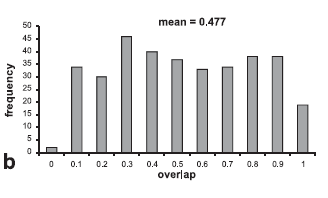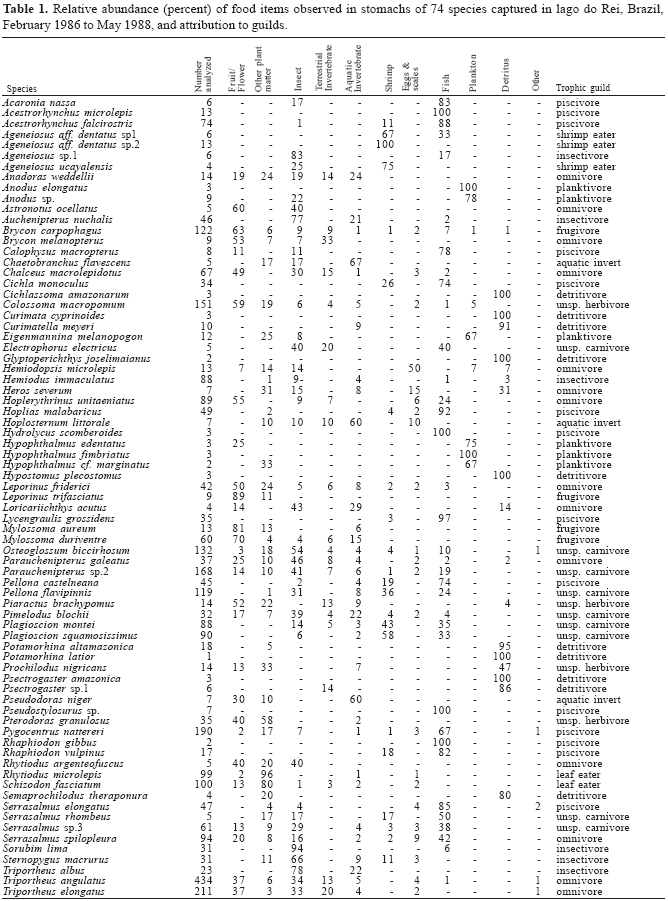Diets of most of fish species inhabiting a floodplain lake in central Amazonia were studied over a two years and half period. Based on the percentage of relative occurrence of 11 major food categories a classification of species in 11 feeding guilds is proposed. Many species were found to be specialized feeders. Fish, detritus and insects were the most important food resources supporting the fish community in both seasons, but the proportions of fruits, invertebrates and fish were reduced during the low water season. At the community level mean diet overlap between species was low, suggesting efficient resource partitioning within the community. However mean overlap between unspecialized feeders was high. Based on the 23 most abundant species belonging to the different feeding guilds, there was no difference in mean overlap between seasons. Whereas individual species exhibited diet changes between high water and low water seasons, there was no general pattern of seasonal change within feeding guilds.
varzea lake; fishes; diet; overlap; seasonal variability







